Best Deep Sea Fishing Destinations on the Gulf Coast
The Gulf Coast of the United States stretches more than 1,600 miles from Florida to Texas, creating one of the world’s premier deep sea fishing environments. These warm, nutrient-rich waters host an incredible diversity of game fish that draw anglers from around the globe. From massive billfish and tuna in the deeper waters to the abundant snapper and grouper populations closer to shore, the Gulf offers year-round fishing opportunities for both novice and experienced anglers alike. Whether you’re looking to battle a monster marlin or fill your cooler with delicious table fare, the Gulf Coast provides some of the most accessible and productive deep sea fishing waters in North America.
The following destinations represent the crown jewels of Gulf Coast offshore angling, each offering unique experiences and fish species that make them bucket-list locations for serious saltwater enthusiasts.
Destin, Florida – The World’s Luckiest Fishing Village
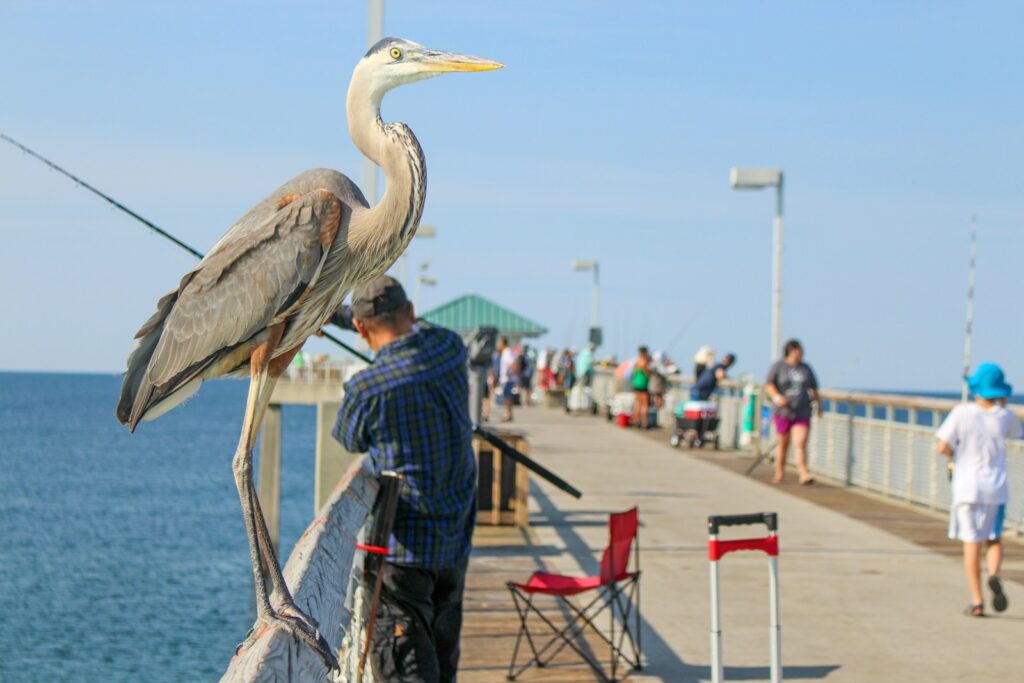
Destin has rightfully earned its nickname as “The World’s Luckiest Fishing Village” due to its prime location where the continental shelf comes closest to shore along the entire Gulf Coast. This geographical advantage means anglers can reach deep water fishing grounds in as little as 10 miles offshore, saving valuable time and fuel compared to other destinations. Destin’s offshore waters are home to an impressive variety of gamefish including mahi-mahi, wahoo, sailfish, marlin, and yellowfin tuna, with peak seasons typically running from April through October.
The area’s charter fleet is one of the largest and most experienced in the Gulf, offering everything from shared-expense party boats to luxury sportfishing yachts for full-day and overnight excursions. Beyond the fishing, Destin’s white sand beaches, excellent restaurants, and family-friendly attractions make it an ideal destination for anglers who want to combine serious fishing with a vacation atmosphere.
Orange Beach/Gulf Shores, Alabama – Home to Record-Breaking Catches
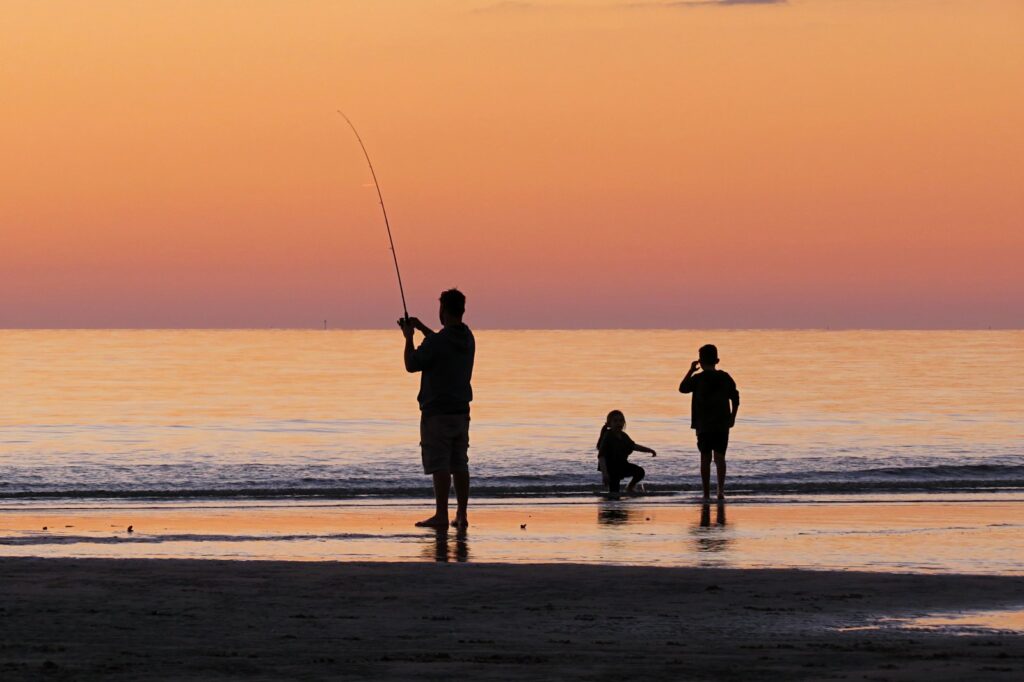
The Orange Beach and Gulf Shores area has established itself as one of the premier big game fishing destinations on the Gulf Coast, with numerous state and world records coming from these productive waters. Alabama’s artificial reef program is the largest in the United States, with over 17,000 artificial reefs providing essential habitat for prized species like red snapper, grouper, amberjack, and triggerfish. During the annual Alabama Deep Sea Fishing Rodeo—the largest fishing tournament in the world—anglers compete for prizes while targeting over 30 different species across multiple categories.
The offshore oil and gas platforms scattered throughout the area create natural fish-attracting structures where pelagic predators like kingfish, cobia, and even blue marlin congregate. The area’s fishing infrastructure is exceptionally well-developed, with multiple marinas offering modern facilities, experienced charter captains, and professional cleaning services to process your catch.
Venice, Louisiana – The Tuna Capital of the Gulf

Venice, Louisiana stands in a class of its own as perhaps the finest yellowfin tuna fishery in the continental United States, with specimens regularly exceeding 200 pounds. This remote fishing village at the southernmost road-accessible point of Louisiana provides unparalleled access to the productive waters where the Mississippi River meets the Gulf of Mexico. The nutrient-rich river outflow creates an extraordinary food chain that supports not only world-class tuna fishing but also outstanding opportunities for marlin, wahoo, swordfish, and mahi-mahi. Unlike many Gulf destinations, Venice offers excellent fishing year-round, with winter often producing the largest yellowfin tuna while being less crowded than summer months.
The offshore oil platforms and floating production facilities serve as fish-aggregating devices on an industrial scale, creating predictable locations for finding concentrations of pelagic gamefish. While Venice lacks the tourist infrastructure of other destinations, serious anglers consider this no-frills fishing mecca well worth the journey for the opportunity to battle some of the hardest-fighting fish in the Gulf.
Port Aransas, Texas – The Tarpon Capital of Texas

Port Aransas has long been recognized as the center of Texas offshore fishing, with a rich history dating back to when President Franklin D. Roosevelt would visit to pursue the mighty silver king tarpon. The waters off Port Aransas feature extraordinary habitat diversity, from shallow nearshore waters to the deep continental shelf edges where blue water pelagics roam. The area’s famous 55-Fathom Curve lies approximately 70 miles offshore and serves as a major migratory pathway for billfish, including blue marlin exceeding 700 pounds, white marlin, and sailfish.
The Texas offshore season typically peaks between May and September when calm seas make the longer runs feasible, though the red snapper season draws crowds during its limited open periods. Port Aransas hosts several major tournaments including the prestigious Texas International Fishing Tournament, which has been running for over 80 years and attracts elite competitive anglers from across the country.
Biloxi, Mississippi – Underrated Deep Sea Treasure
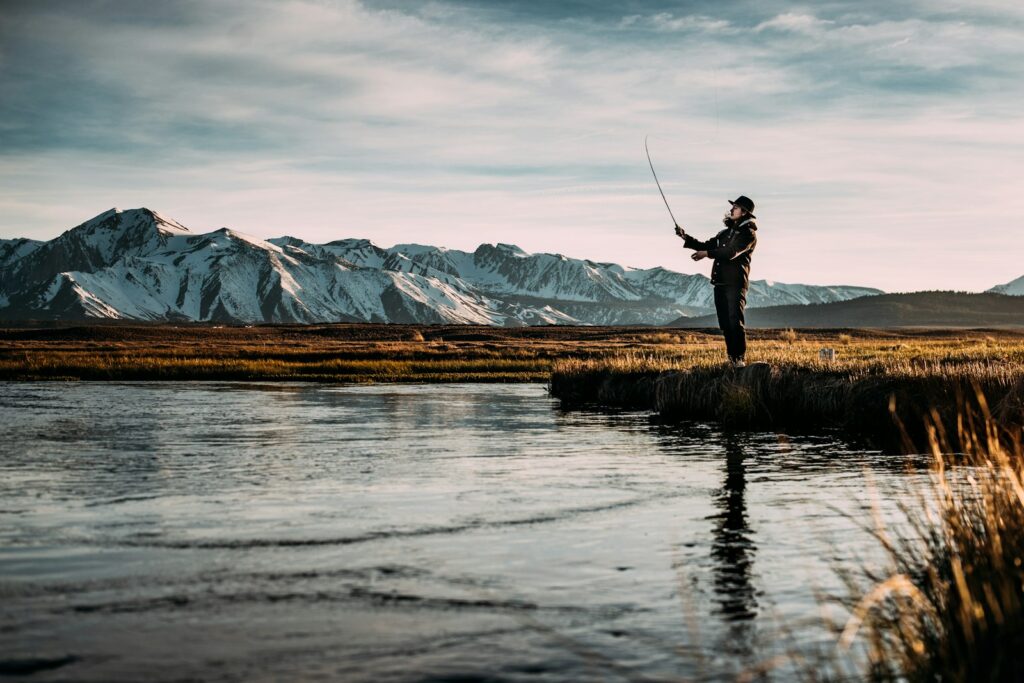
Often overlooked in conversations about premier Gulf fishing destinations, Biloxi offers exceptional offshore opportunities without the crowds found in more publicized locations. Mississippi’s artificial reef program has created numerous productive fishing areas including the famous “Tuna Alley,” where yellowfin and blackfin tuna can be targeted year-round when weather permits. The offshore waters feature numerous underwater structures including the FH-13 fishing haven, a submerged liberty ship that holds impressive concentrations of amberjack, grouper, and snapper throughout the year.
Biloxi’s central location on the Gulf Coast provides anglers with versatile options, from trolling the blue water for pelagics to bottom fishing productive structure for reef species, often on the same trip. The area’s casino resorts offer luxurious accommodations at surprisingly affordable prices compared to other Gulf destinations, making this an excellent value for anglers looking to combine offshore adventures with comfortable lodging.
Key West, Florida – Where Gulf Meets Atlantic
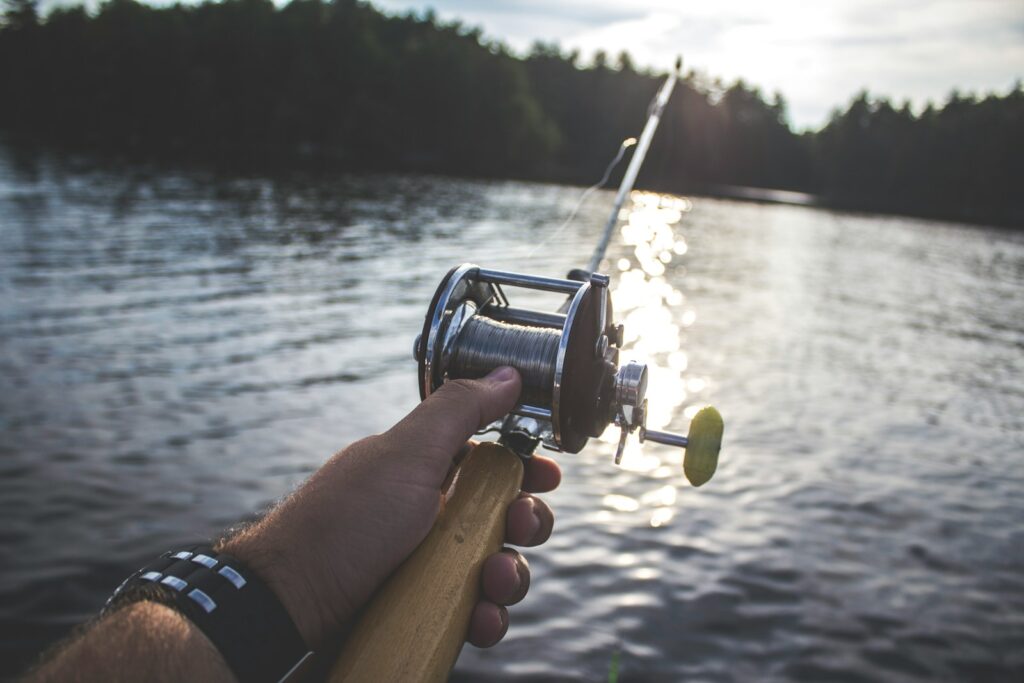
Technically at the intersection of the Gulf of Mexico and the Atlantic Ocean, Key West offers a unique deep sea fishing environment unlike anywhere else on the Gulf Coast. The convergence of these two major bodies of water creates dynamic currents and temperature breaks that concentrate baitfish and the predators that pursue them, including sailfish, marlin, tuna, and wahoo. Key West’s proximity to the Gulfstream means anglers can access deep blue water in as little as 20 minutes of running time from port, allowing for more fishing and less traveling compared to most Gulf destinations.
The area is particularly famous for its winter and spring sailfish runs, when multiple hookups are common as these acrobatic fighters migrate through the region. Key West’s charter fleet ranges from traditional deep sea sportfishing vessels to unique “multi-purpose” boats designed to fish both the offshore waters and the nearby reef systems, providing visitors with flexible options regardless of weather conditions.
Galveston, Texas – Gateway to Deep Gulf Waters
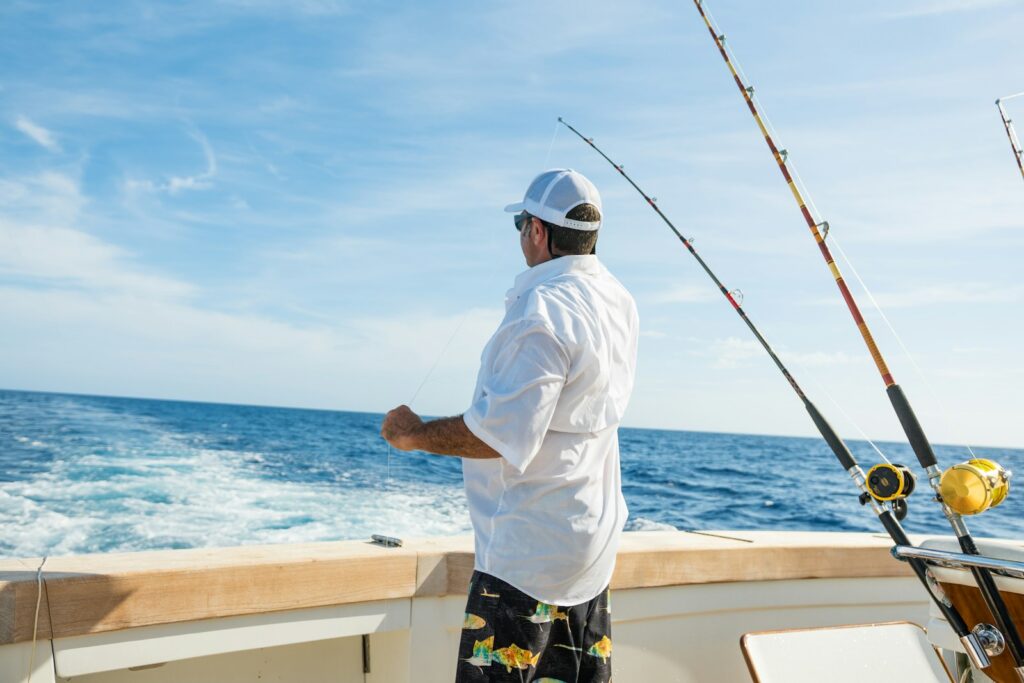
Galveston serves as the primary deep sea fishing port for the upper Texas coast, offering access to some of the most productive offshore waters in the western Gulf of Mexico. The area’s numerous oil and gas platforms create a vast network of artificial structure stretching from nearshore waters to hundreds of miles offshore, each serving as its own ecosystem teeming with marine life. Galveston’s location makes it one of the closest access points to fish the famous Flower Garden Banks National Marine Sanctuary, a protected coral reef ecosystem that holds exceptional populations of snapper, grouper, and other reef species.
Summer months bring opportunities for targeting blue marlin, white marlin, and sailfish along the continental shelf edges approximately 100 miles offshore, while shorter trips to nearshore platforms consistently produce kingfish, cobia, and sharks. The city’s historic charm, combined with modern amenities and direct access to major transportation hubs in nearby Houston, makes Galveston particularly convenient for traveling anglers.
Pensacola, Florida – Historic Fishing Tradition
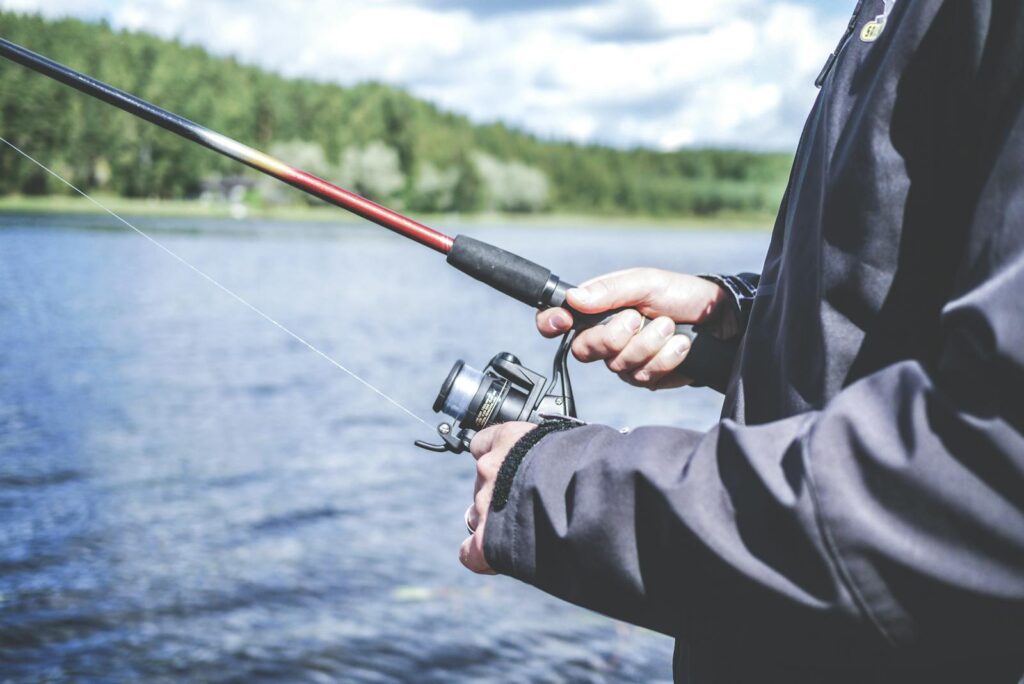
Pensacola combines rich fishing history with modern infrastructure to create one of the Gulf Coast’s most complete deep sea fishing destinations. The famous “Edge” and “Nipple” offshore areas lie approximately 35-40 miles from Pensacola Pass and consistently produce exceptional catches of wahoo, blackfin tuna, and mahi-mahi, while the deeper “Spur” area offers world-class marlin and swordfish opportunities. Pensacola’s extensive artificial reef system includes everything from small concrete pyramids to entire decommissioned naval vessels, creating diverse habitat for snapper, grouper, and amberjack at various depths.
The Pensacola International Billfish Tournament, established in 1970, stands as one of the oldest continuously running billfish tournaments in the Gulf and draws elite competitive anglers each summer. The protected waters of Pensacola Bay provide a safe harbor even during rough conditions, ensuring that when offshore trips aren’t possible, anglers can still pursue inshore species like redfish, speckled trout, and flounder.
South Padre Island, Texas – The Southern Gateway

Located at the southernmost tip of Texas, South Padre Island offers the state’s closest access point to the productive deep waters of the western Gulf of Mexico. The area’s proximity to Mexico means anglers can access the legendary “Mexican Drop,” where the continental shelf plunges from 600 to 2,000 feet, creating an underwater canyon system that attracts large pelagic species including blue marlin, sailfish, and yellowfin tuna. South Padre’s charter fleet has developed specialized techniques for targeting the area’s famous “winter swordfish,” with daytime deep-dropping producing exceptional catches of broadbill swordfish even during the cooler months.
The Port Mansfield Cut, approximately 30 miles north of South Padre, creates a unique environment where offshore species often venture into the protected waters of the Laguna Madre, providing opportunities for anglers in smaller boats to target kingfish, cobia, and Spanish mackerel without venturing into the open Gulf. The island’s year-round tropical climate and excellent fishing opportunities during winter months make it particularly attractive for anglers looking to escape colder northern regions.
Panama City Beach, Florida – Diverse Fishing Grounds

Panama City Beach offers offshore anglers access to some of the most diverse fishing grounds in the northern Gulf, with options ranging from nearshore reefs to blue water destinations. The area is particularly renowned for its exceptional red snapper fishing, with some of the largest specimens in the Gulf regularly coming from the natural bottom structures and artificial reefs scattered throughout these waters. Panama City’s offshore waters feature several underwater canyons including the famous “Desoto Canyon,” which creates upwellings that concentrate baitfish and attract pelagic predators including marlin, tuna, and wahoo.
The area hosts several major tournaments including the Bay Point Billfish Classic, which has produced numerous record catches and typically features one of the largest tournament purses in the northern Gulf. Panama City Beach’s central location in the Florida Panhandle makes it easily accessible from much of the southeastern United States, with exceptional fishing opportunities available from spring through fall.
Port Fourchon, Louisiana – The Offshore Industrial Hub
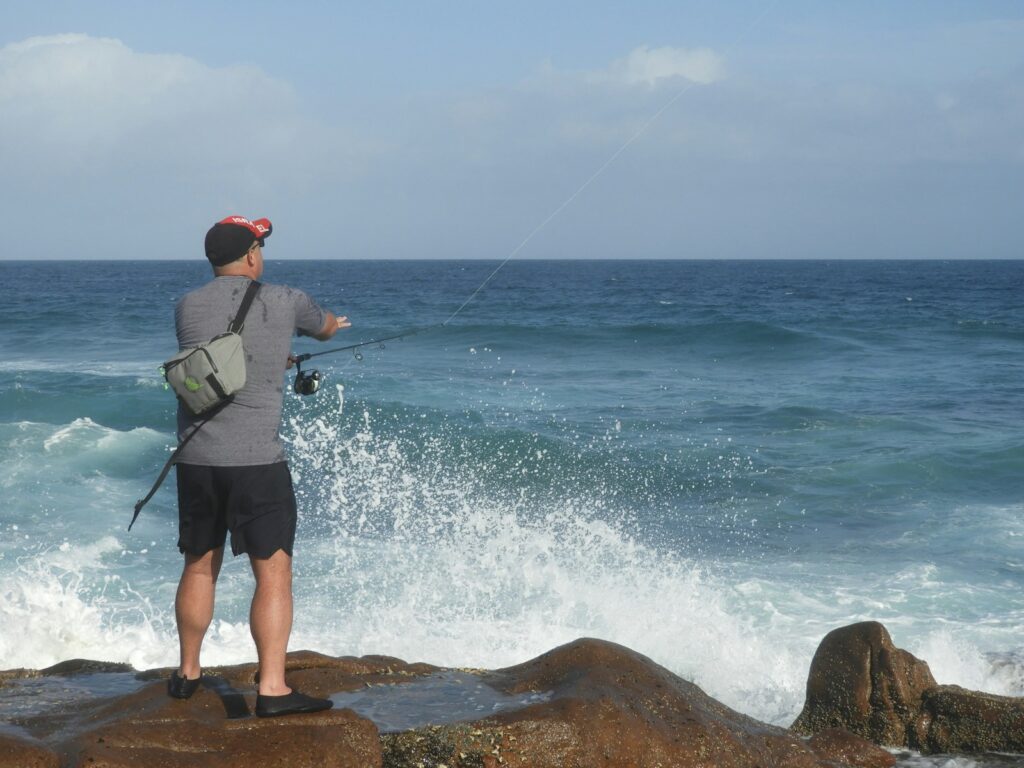
Port Fourchon represents the heart of Louisiana’s offshore oil and gas service industry, but savvy anglers know it also provides access to some of the Gulf’s most productive fishing grounds. The port’s location at the mouth of Bayou Lafourche creates a direct path to the blue water fishing grounds, with runs to productive yellowing tuna grounds often taking less than two hours. The numerous oil platforms surrounding Port Fourchon create perfect structure for attracting both reef species and pelagic predators, with many platforms holding year-round populations of snapper, grouper, cobia, and amberjack.
The area’s proximity to the Mississippi Canyon system offers outstanding opportunities for swordfish, with both nighttime and daytime techniques producing quality catches throughout much of the year. While Port Fourchon lacks the tourist infrastructure of more established destinations, the quality of fishing more than compensates, with multiple charter operations based here specifically because of the exceptional access to productive waters.
Choosing the Right Season for Gulf Coast Deep Sea Fishing

Understanding seasonal patterns is crucial for planning a successful Gulf Coast deep sea fishing adventure, as species availability and weather conditions vary significantly throughout the year. Summer (May through September) generally offers the most stable weather conditions, making it ideal for reaching distant offshore locations where blue marlin, yellowfin tuna, and mahi-mahi are most prevalent. Fall (October through November) creates transitional periods when cooling water temperatures trigger feeding frenzies, particularly for species like kingfish, wahoo, and blackfin tuna that follow baitfish migrations.
Winter fishing (December through February) can provide exceptional opportunities in the southern Gulf destinations like Key West and South Padre Island, while northern Gulf locations often face challenging weather conditions that limit offshore access. Spring (March through May) brings warming waters and the arrival of migratory species like cobia and king mackerel, along with the opening of highly regulated seasons for prized reef fish like red snapper and grouper.
Conclusion
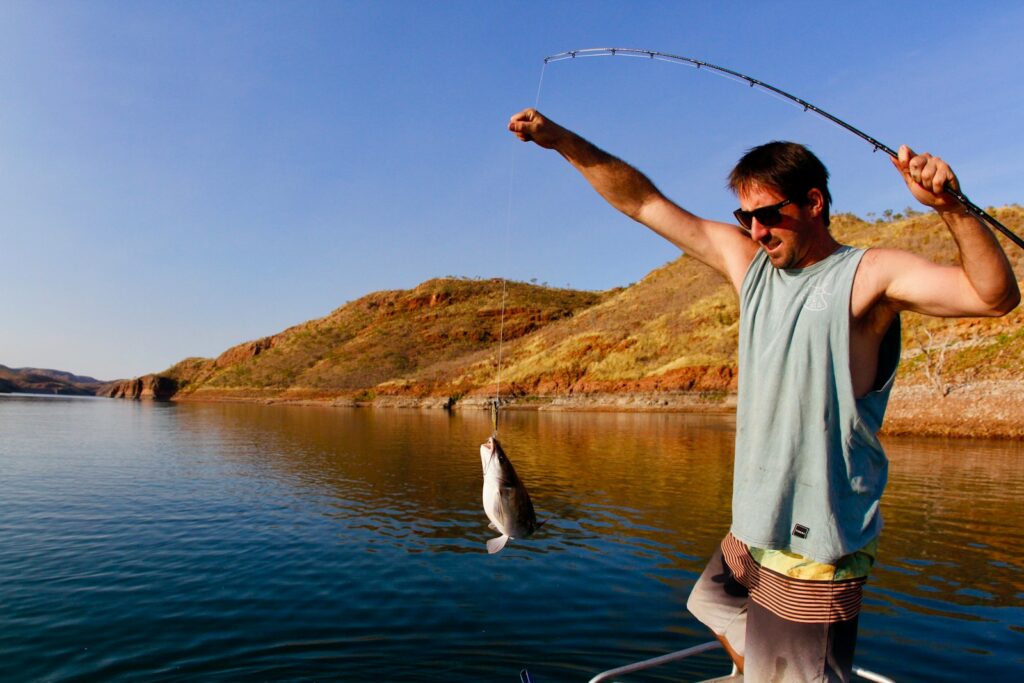
The Gulf Coast offers an extraordinary range of deep sea fishing opportunities spanning multiple states and ecosystems. From the legendary tuna grounds of Venice, Louisiana to the accessible blue waters off Destin, Florida, anglers can find world-class fishing experiences tailored to their preferences and skill levels. What makes Gulf Coast deep sea fishing truly special is its combination of accessibility, diversity, and productivity. Whether you’re a tournament angler pursuing record billfish or a family looking to fill the freezer with delicious snapper, the Gulf Coast provides appropriate options year-round.
As you plan your next offshore adventure, consider the distinct advantages of each destination highlighted above, research the seasonal patterns for your target species, and connect with experienced local charter captains who can maximize your chances for a successful and memorable Gulf Coast fishing experience.














Post Comment